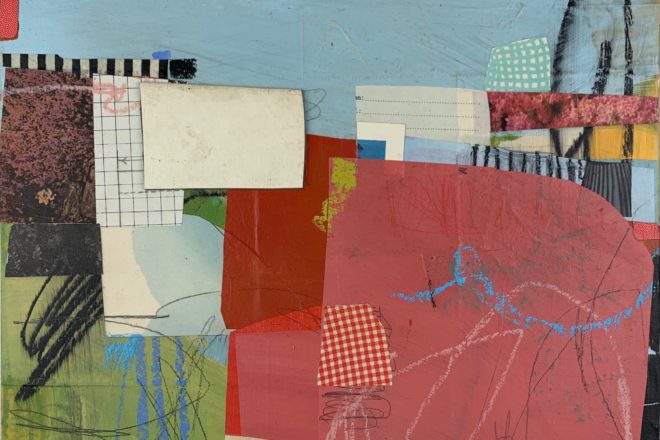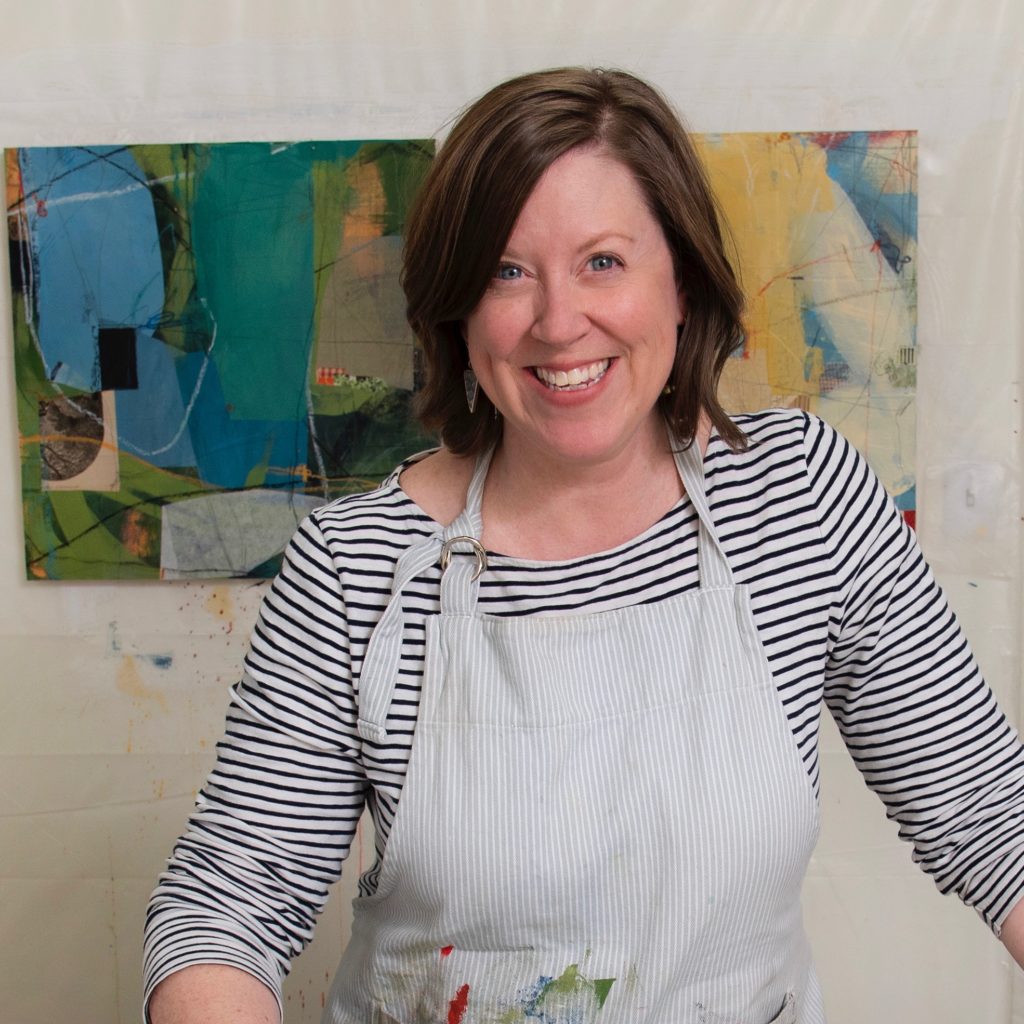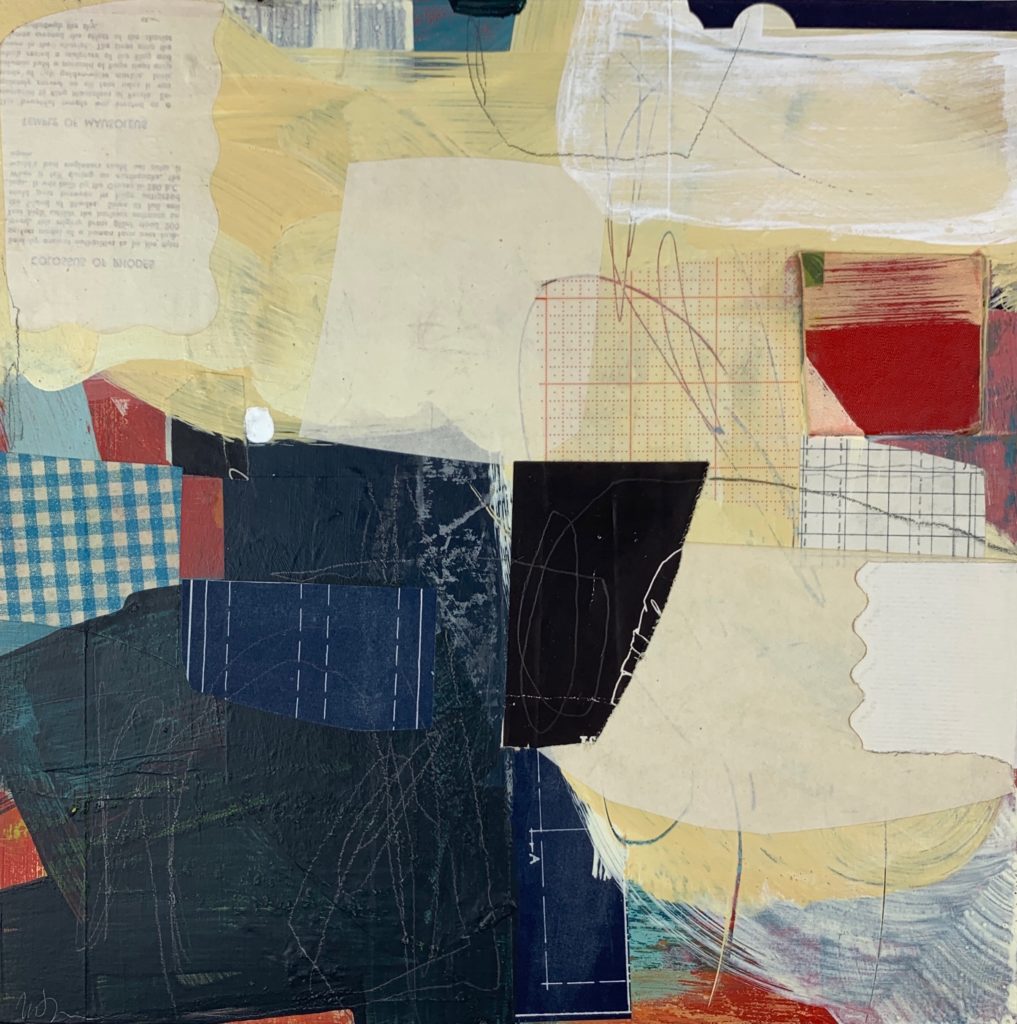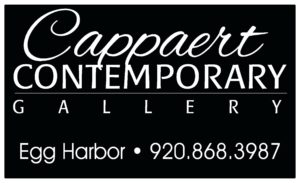Artist Profile: Megan Woodard Johnson
- Share
- Tweet
- Pin
- Share

Imagine you’re making a map of the area where you live. Where would you delineate borders? Alongside the obvious landmarks, would you also include handprints left in cement sidewalks, past residents, foundations of old buildings, and the route you took to school when you were a kid? Such a record-making process could soon become too complex to be communicated through traditional mapmaking.

Not so for Wisconsin-based artist Megan Woodard Johnson. The artist, whose work is a new addition to Cappaert Contemporary Gallery in Egg Harbor, regularly records such complexities in her richly textured, abstract artwork that layers collage, paint, pencil and pastel. Her paintings explore – and are inspired by – the everyday entanglements of memory, universal experience, place, space and relationship.
“I have always worked with the layering of different materials – since college, and honestly, probably since childhood,” Johnson said. “I’m always really aware of how layered our lives and experiences are, and how our lives bump into the lives of people around us. Those layers of experiences and moods and personalities and perspectives make all of our interactions so rich.”
After a mutual artist friend introduced Johnson to Ginnie Cappaert, Johnson made a trip to Door County last summer from her home in West Bend, Wis., to check out Cappaert Contemporary Gallery. Ultimately, Johnson was attracted to the gallery because of its welcoming atmosphere and its “family” of talented artists. Currently, it houses 12 of Johnson’s pieces: six 12-inch-by-12-inch mixed-media paintings and six smaller studio studies.
If Johnson’s paintings were musical arrangements, their sound would crescendo with bold colors and then soften into quiet notes of collage. Large, loose strokes of paint sweep across the compositions. Pencil and pastel marks loop across mixed-media layers. Sometimes, pastel and pencil marks drift and scribble absentmindedly, as if communicating a tangential thought. Other times, the marks are definitive and directional, like routes on a map. The inclusion of found collage material creates unexpectedly intimate moments.
Johnson’s inclusion of found collage elements is pitch-perfect, so it’s no surprise that her collection of collage material is carefully curated and comprises materials that were originally designed to help people learn or organize, including bits from books, ledgers and children’s workbooks.
She’s especially drawn to materials from the 1940s to the 1970s. This window of time is not only aesthetically interesting, but it also reminds her of objects she found in her grandmother’s house when she was a child.
The interplay between the larger-than-life elements and the intimate moments in Johnson’s work is inspired by the interplay between private moments and shared or universal experience.
“One of my favorite things is when you meet someone new, and within a very short period of time, you find out you have something in common somehow,” said Johnson. “I was in a conversation with someone once, and for whatever reason, having had a tree fort as a kid came up. I had a tree fort as well, and it was an instant connection with this person. Our memories of our own tree forts were very personal, but the experience of having a private, magical place as a kid is nearly universal.”
The titles of Johnson’s paintings are almost as intriguing as the paintings themselves. For her, giving a title to a painting is about trying to place words around a memory, feeling or mood that the piece evokes.

“Fallow Fields,” one of the paintings on display at Cappaert Contemporary Gallery, was named to communicate the sense of a fallow field being a space that’s currently empty and quiet, yet full of potential for rich growth in the future.
The inspiration for another painting currently on display, “A Long Shortcut,” was a childhood memory of walking home with a friend and inventing multiple “shortcuts” that ended up making the walk longer instead of shorter.
Johnson has an incredible knack for melding precious, personal memories with universal appeals to nostalgia throughout her body of work. Through it, viewers can experience her point of view while still connecting the work to their own memories and experiences.
“When people come and look up close at my work, they start discovering things they recognize,” Johnson said, “and when people start to recognize those things, they really begin to bond with the work. It’s hard not to discover a bit of the classic gold-foil binding from a Little Golden Book and not feel somehow connected because this painting that you’ve never seen before is instantly transporting you back to some very personal memories.”



